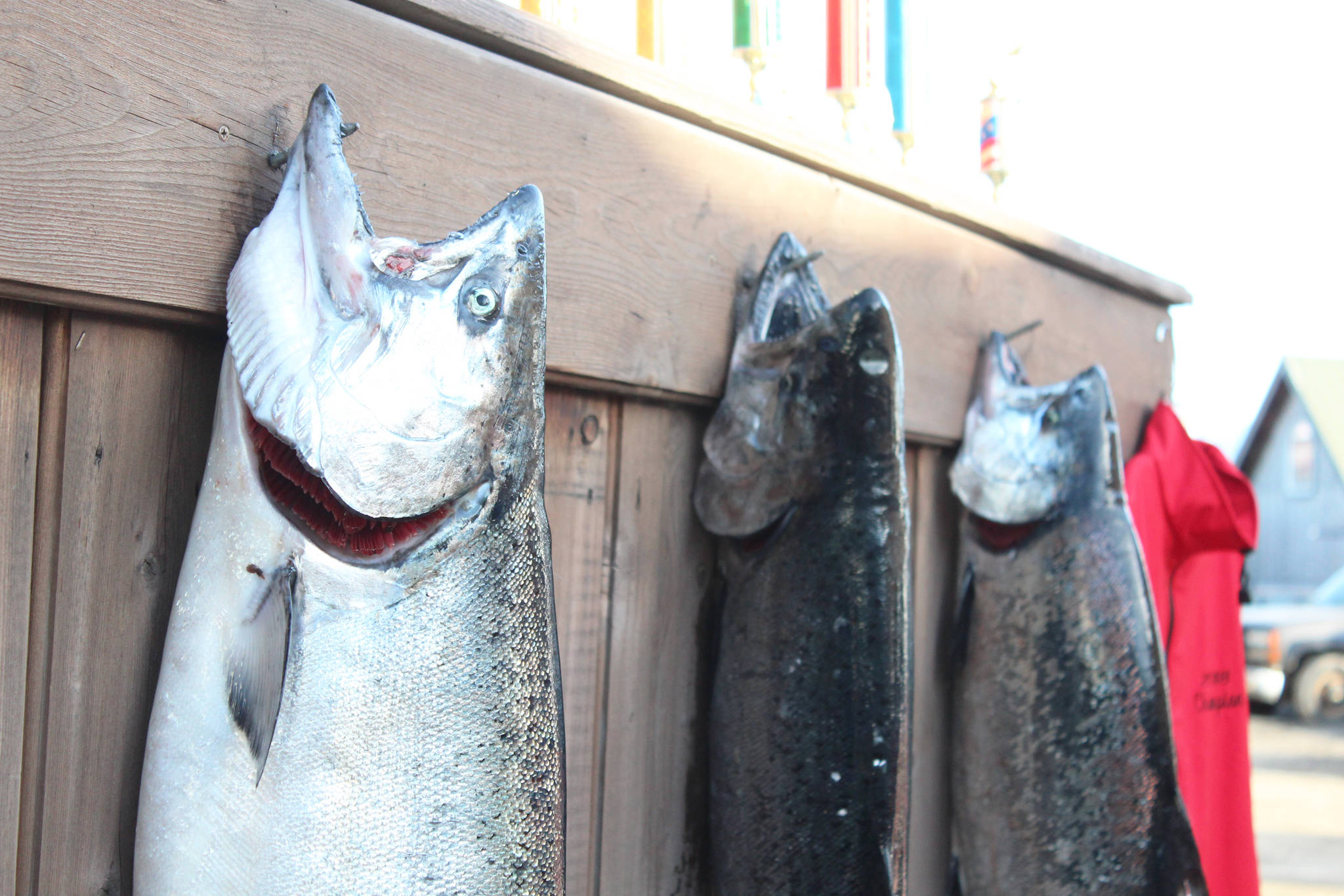The Alaska Department of Fish and Game has imposed king salmon restrictions and closures on the central peninsula this summer over concerns that the species won’t reach its escapement goals, but this is not the first year the king return has hit a slump.
So, what’s causing the decline of king salmon?
To answer simply, officials aren’t sure.
“It’s a billion dollar question,” Colton Lipka, the ADF&G Northern Kenai Peninsula area manager, said Tuesday.
Scientists think the weak king salmon returns in the area may be due to a number of environmental factors including water temperature, ocean currents and juveniles’ ability to survive in freshwater. But there’s not one simple answer.
“There are just so many variables that play into it,” Lipka said about king salmon production.
He said scientists began to take note of declining king salmon returns around 2010, and kings have maintained below-average returns since.
“Since then we’ve just been looking at lower production,” Lipka said.
According to data from the ADF&G, the total Kenai River king salmon late-run fish count was 22,133 in 2017. In the 2020 season, the cumulative king late-run total was 11,499, down approximately 48% in three years.
Lipka said ADF&G has regularly imposed restrictions for king salmon harvest throughout the years, but the decline in the number of kings looks more like an environmental issue than a human one.
Basically, even though human harvest has been minimized, the king numbers have not rebounded. This, he said, is likely due to factors beyond just the ADF&G’s control.
Kings differ from other species of salmon. They are generally physically larger, and feed on other marine life — like fish, squid and octopus — when they rear, or grow up, in saltwater.
In contrast, sockeye salmon — which have had more plentiful runs in the Kenai River in the past years — feed on invertebrates like krill and plankton.
According to the National Oceanic and Atmospheric Administration, scientists are studying the ocean’s climate patterns in a metric called the Pacific Decadal Oscillation (PDO) index to try to understand the changes to king salmon habitat in and around Alaska waters.
The Aleutian Low zone, which is a semi-permanent low-pressure system that affects the PDO and climate of the area surrounding it, became less active in the late 1980s, according to NOAA.
This zone had a major influence on ocean temperature, ocean currents and wind patterns before the late 1980s. Now, however, since the Aleutian Low zone is less active, the PDO is a less effective tool for predicting biological oceanic activity.
Although Lipka couldn’t identify the king decline issue with certainty, he said there are multiple ongoing studies on the environmental factors in both the fresh and saltwater habitats that have potentially contributed to it.
“There’s so many of us trying to study this,” Lipka said.
The Kenai and Kasilof Rivers are currently closed to king salmon sport fishing. To adhere to the Kenai River Late-Run King Salmon Management Plan, the eastside setnet commercial fishery is also shut down. Bait and multiple hooks have also been prohibited in the Kenai River through Aug. 15.
For more information, the Soldotna Fish and Game Office can be reached at 907-262-9368.
Reach reporter Camille Botello at camille.botello@peninsulaclarion.com.

